How to Get Colors of Rainbow Using Bromothymol Blue
Here are three colorful chemical reactions to do with kids!
This post contains Amazon affiliate links.
We've been studying chemistry in our science book (Exploring Creation with Chemistry and Physics), and we have some very colorful chemical reactions to share with you as part of the STEAM Power blog series.
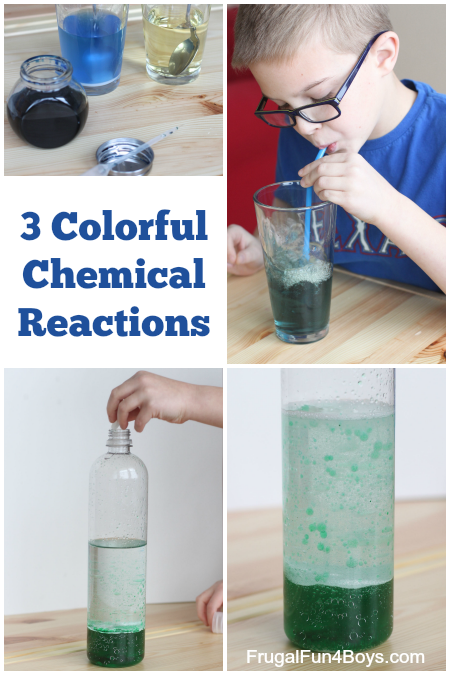
Experiment #1: Change the color with your breath!
The secret to this experiment is a pH indicator called bromothymol blue. Bromothymol blue is used for managing the pH of fish tanks and pools because it can detect weak acids.
How does a pH indicator work? Some substances have the property of changing color as the surrounding pH changes. The term for this is halochromism. The pH indicator actually undergoes a change in molecular structure in the presence of an acid or base.
First, we tested the bromothymol blue with a strong acid – vinegar. The glass on the right has vinegar and the glass on the left has baking soda and water. The bromothymol blue turned yellow in the presence of the vinegar, but remained blue in the presence of the baking soda.
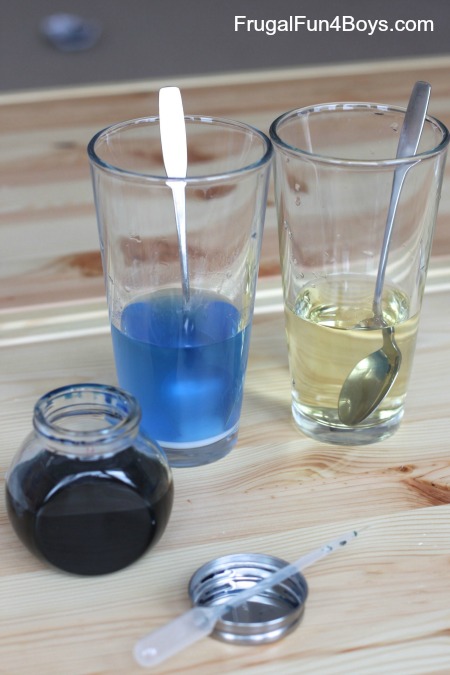
Then, we put some bromothymol blue (several droppers full) into a glass of water. Gresham used a straw to blow into the water. The exhaled CO2 reacted with the water to form a weak acid, which turned the bromothymol blue to… well, watch and see!
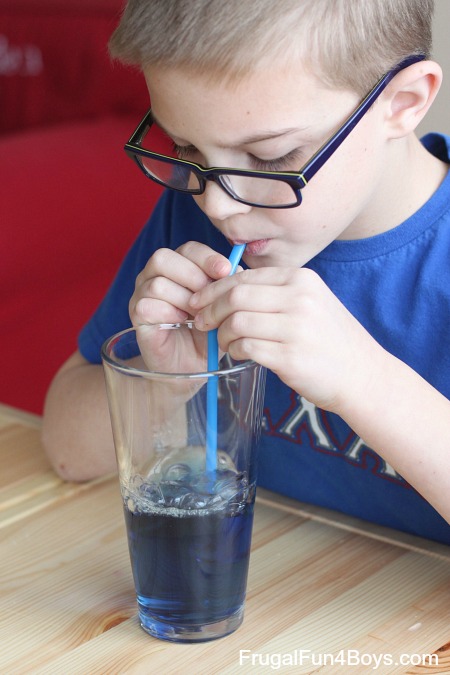
(Make sure that the child doing the blowing is old enough to not accidentally drink from the straw!)

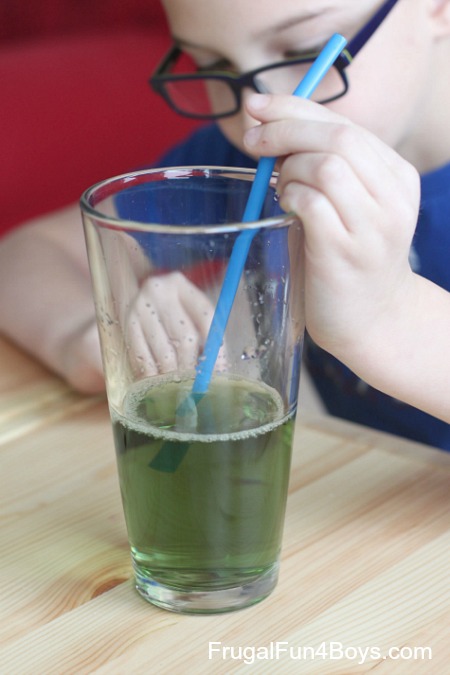
Experiment #2: Alka Seltzer Lava Lamps
What makes Alka Seltzer fizz? When you drop an Alka Seltzer tablet in water, it fizzes for the same reason that baking soda and vinegar fizz – an acid and a base are reacting together. Alka Seltzer tablets contain sodium bicarbonate (baking soda) and citric acid. In tablet form, the two chemicals are suspended away from each other and do not react. Once you drop them in water, the tablets dissolve and the reaction starts!
Here's how you can use the fizzing action of Alka Seltzer to create a fun homemade "lava lamp."
Fill a clean plastic bottle about halfway with vegetable oil or baby oil. Then add some water. We used a 1 liter water bottle (Propel brand because the bottle was so nice and smooth) and filled it with one small bottle of baby oil and a few inches of water. Add a few drops of food coloring. It's fun to watch the food coloring slide through the oil in tiny drops (it won't mix with oil) and then explode with color when it reaches the water!

Put the cap on your bottle and shake to make sure that the food coloring is mixed with the water. Once the food coloring and water are well mixed, let the bottle sit for a minute so that the oil and water can fully separate. Then drop in an alka seltzer.

The reaction between the sodium bicarbonate and the citric acid in the Alka Seltzer creates CO2 gas as a by-product. All that gas rises through the oil, creating a fun visual effect! When it's done, drop in another Alka Seltzer to do it again!
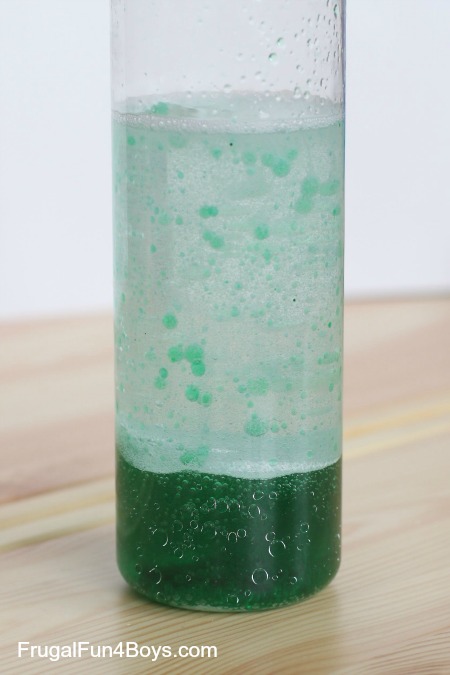
Experiment #3: Bleach out the Color!
Did you know that common household bleach (sodium hypochlorite) removes color through a chemical reaction? All substances have chromophores, which are the parts of the molecule that give an item its color by absorbing some wavelengths of light and reflecting others. Bleach works by breaking the double bonds of the chromophores into single bonds, which are not able to absorb light. (Remember from science class that items that appear white reflect all colors of the visible light spectrum, while black absorbs all the colors. A blue object absorbs all the other colors except blue, which is reflected back to our eyes.)
We watched this in action by putting a generous amount of food coloring into a glass of water. We stirred it up and it became a muddy, blackish mess.
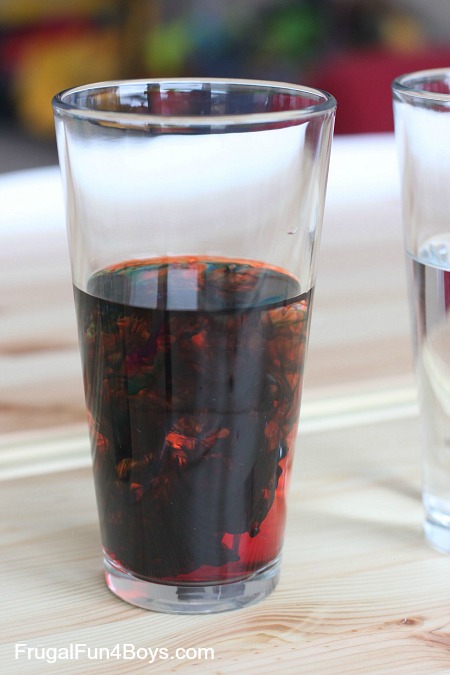
Then I stirred in some bleach.
Be sure to be careful with bleach. It can harm eyes and irritate skin and of course should not be used with anyone who might taste it!
The boys were amazed at how the bleach removed almost all of the color in our water! (It would have removed all the color if I had added more bleach, but I had a crying baby at this point. Hopefully soon we can do this again and add another photo.)
Another fun thing to do is to mix bleach with water (about 50/50) and drop food coloring in one drop at a time and stir. The food coloring disappears! Do the same thing with water and compare the results.
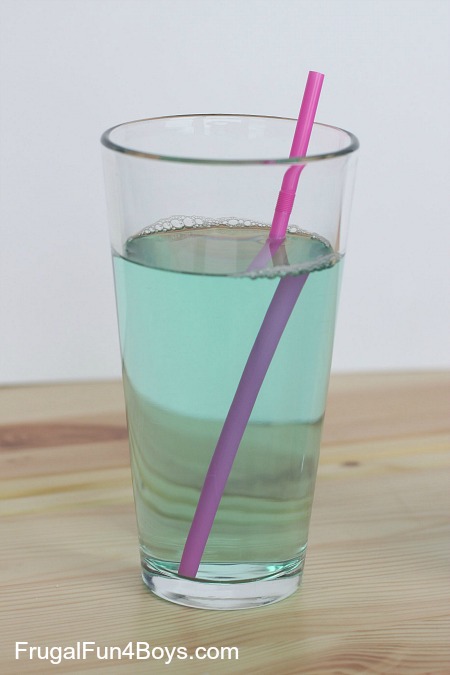
Here's a video demonstration of the first two experiments:
Be sure to stop by the rest of the posts in this week's STEAM series!
Create a Rube Goldberg Machine from Tinkerlab
Smoosh Painting from Meri Cherry
Glowing Hands from All for the Boys
Stixplosions from Babble Dabble Do
Inertia Zoom Ball from What Do We Do All Day?
Color Changing Chemistry Clock from Left Brain Craft Brain
Rainbow Reactions from Lemon Lime Adventures

williamslitis1955.blogspot.com
Source: https://frugalfun4boys.com/colorful-chemical-reaction-experiments-kids/
0 Response to "How to Get Colors of Rainbow Using Bromothymol Blue"
Post a Comment